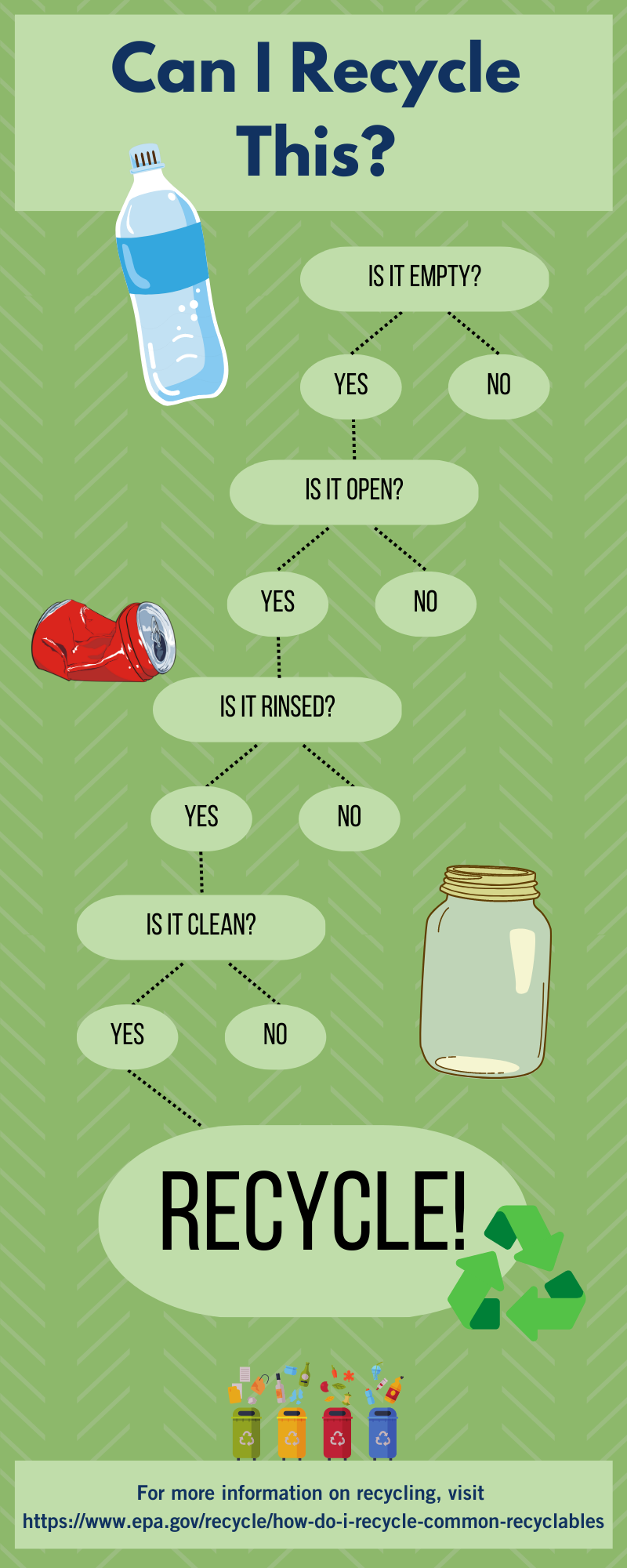Let's Talk Trash: The Confusion Behind Recycling
Posted on by Isabelle Brown
Here’s a statistic that may be exceptionally difficult to wrap your head around: The total generation of solid waste in 2018 was equal to 4.9 pounds per person per day. Coming to terms with how much we use and dispose of every day is... A lot.
A large part of how much waste we produce is how we dispose of it. Along with this comes a common process that can be strangely difficult to understand: Proper recycling techniques.
We all know recycling to be an important part of daily life, so why is it so confusing?
Let’s go through some common household trash in a segment we’ll call: Can I Recycle That?
| Material | YES | NO |
| Paper |
Cardboard, including pizza boxes Food and beverage cartons Junk mail Newsprint |
Shredded paper Ice cream containers Take-out food containers Tissue paper |
| Glass | Bottles and jars from food or beverages |
Ceramic dishes and mugs Drinking glasses |
| Metal |
Aluminum foil Cans Food grade aerosol cans |
Pots and pans Foil yogurt tops Aerosol cans like deodorizers, cleaners, etc. |
| Plastic |
Plastic bottles – keep the cap on! Plastic tubs/containers |
Loose bottle caps Plastic bags and wrap Styrofoam – cups, containers, packing peanuts |
Other Things to Note:
All recyclable items should be empty, rinsed, and clean. Not spotless, but at least clean.
Items like plastic bags are recycled separately and ONLY at a recycling center. They do not go in your bin!
Not-So-Fun Facts:
- Ever wonder why you can’t throw your plastic bags from the grocery store in your recycling bin? They get tangled in equipment at recycling facilities and threaten worker safety. You can learn where to recycle plastic bags at plasticfilmrecycling.org.
- Or, something we’ve seen recently is employees organizing the installation of a plastic bag recycling bin at their workplace through their leadership team, human resources staff, or environmental sustainability department!
- When you bring plastic bags to a store like Walmart or a grocery store to be recycled, there are a number of ways they are recycled. Some are sent to companies that either break the bags down into pellets to be reprocessed into new bags, while many organizations ship their bags to companies that manufacture the bags into plastic lumber.
- Just because you see recycling arrows on a container does not mean it is definitely recyclable. I know, that is unnecessarily complicated. Checking your local recycling program guidelines is your safest bet before tossing something in the bin.
Takeaways
Not to completely trash talk our current recycling system, but it feels like there are so many barriers, exceptions, rules, and no-no's to doing the right thing and recycling.
At the end of the day, taking a moment to Google search if something is recyclable or not is a small price to pay if you are passionate about taking small steps to reducing your household’s waste. However, with a national recycling rate of only 32%, it feels like the root of the problem lies within the confusion surrounding the process of recycling, not in the lack of concern for our nation’s trash problem.

